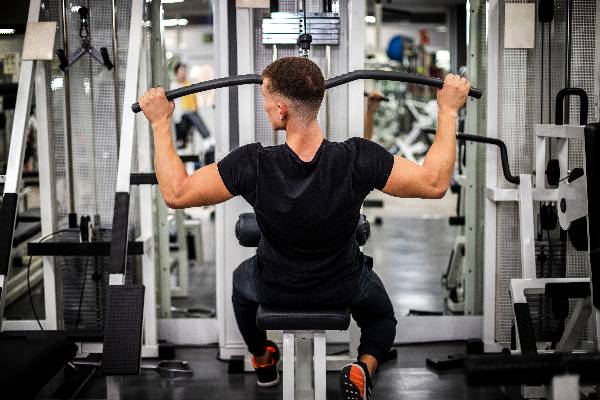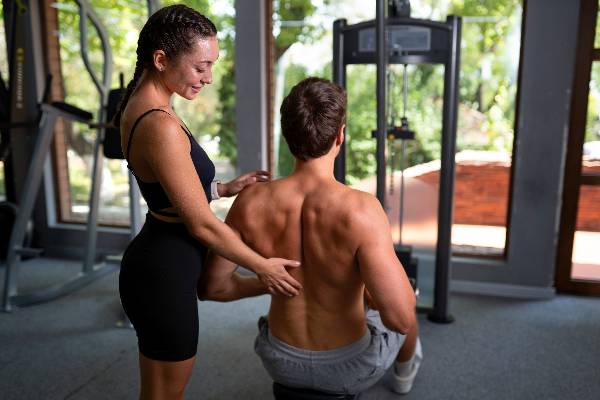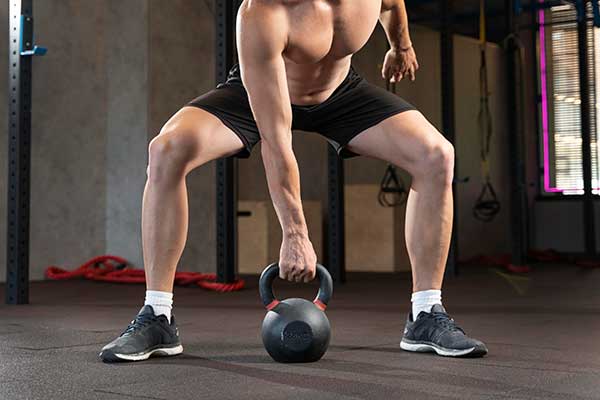Back Exercises Using a Cable Machine
Introduction to Cable Machines and Their Benefits for Back Exercises
Cable machines are a powerhouse tool in the gym, offering versatility and support for a variety of exercises. When it comes to back workouts, they can be particularly effective. Whether you’re looking to build strength or improve flexibility, incorporating cable machine exercises into your routine can make a significant difference.
A strong back is crucial—not just for lifting weights but also for everyday activities like standing tall and maintaining good posture. If you’ve ever experienced back pain or discomfort, you know how important it is to focus on this area of your body.
With so many types of cable machines available today, finding the right one might seem daunting at first. However, understanding their unique features will help you maximize your workout potential.
Ready to target those muscles? Let’s explore some top-notch back exercises using a cable machine that will elevate your fitness game!
The Importance of a Strong and Flexible Back
A strong and flexible back is essential for overall health and well-being. It plays a critical role in posture, balance, and mobility. When your back muscles are strong, they support the spine effectively, reducing the risk of injury during daily activities.
Flexibility is equally important. A flexible back allows for a greater range of motion in various movements. This flexibility can enhance athletic performance and make everyday tasks easier, from bending to tie your shoes to lifting grocery bags.
Moreover, maintaining a healthy back can combat common issues such as pain or discomfort that many people experience due to sedentary lifestyles. Regularly incorporating exercises targeting this area helps alleviate tension and promote relaxation.
Investing time into strengthening and stretching your back will pay off in numerous ways—from improved physical performance to better quality of life as you age. Taking care of this vital part of your body should be a priority for everyone.
Types of Cable Machines and How to Choose the Right One
When selecting a cable machine, consider the type that best fits your fitness goals. There are primarily two options: single station and multi-station machines.
Single station machines offer targeted exercises for specific muscle groups, which is great if you want to focus solely on back workouts. They usually have adjustable pulleys for varying resistance levels.
Multi-station cable machines, on the other hand, provide versatility by allowing multiple users to perform different exercises simultaneously. These setups often include various attachments like handles or ropes.
Another factor is space availability in your gym or home gym setup. Compact models may save room but might limit exercise variety.
Assess build quality and adjustability features when choosing a machine. Investing in durable equipment ensures longevity and effective workouts tailored to your needs.
Top 5 Back Exercises Using a Cable Machine
One of the best exercises you can do on a cable machine is the seated row. This targets your upper back while also engaging your biceps. Adjust the pulley to chest height, grab the handle, and pull it toward you while squeezing your shoulder blades together.
Another excellent option is the lat pulldown. Set up with a wide grip attachment, lean slightly back, and pull down towards your collarbone. This move effectively strengthens those lats for that V-taper look.
Face pulls are fantastic for building rear delts and improving posture. Use a rope attachment at face level; keep elbows high as you pull towards your face.
Don’t overlook single-arm cable rows either! They help develop unilateral strength and balance in muscle development.
Try standing cable reverse flys to hit those upper back muscles from different angles while enhancing shoulder stability. These exercises provide variety and promote overall back health.
Tips for Proper Form and Technique
Maintaining proper form is crucial when performing back exercises using a cable machine. Start by positioning yourself correctly. Ensure your feet are firmly planted and that you have a stable stance.
Focus on engaging your core throughout each movement. This not only provides stability but also protects your lower back from strain.
Pay attention to the alignment of your spine. Keep it neutral, avoiding any excessive arching or rounding during the exercise.
Control the weight with smooth, deliberate movements. Avoid jerking or swinging; this can lead to injury and reduces effectiveness.
Breathe properly. Inhale as you prepare for the lift and exhale during exertion. This simple technique enhances performance while keeping you focused on each repetition’s quality rather than quantity.
Common Mistakes to Avoid
When performing back exercises using a cable machine, it’s easy to slip into bad habits. One common mistake is allowing momentum to take over. Swinging the weights can reduce effectiveness and increase injury risk.
Many people also neglect proper alignment. Keeping your body in the right position ensures that you’re targeting the intended muscle groups effectively. Poor posture can lead to strain on your lower back.
Ignoring breathing techniques is another pitfall. Holding your breath while exerting force can create unnecessary tension and fatigue.
Don’t rush through reps. Quality always trumps quantity when it comes to building strength and flexibility in your back muscles. Focused movements will yield better results than mindless repetitions.
Pay attention to these aspects for a safer, more effective workout experience with cable machines.
Incorporating Cable Machine Back Exercises into Your Workout Routine
Integrating cable machine back exercises into your workout routine can elevate your training game. Start by scheduling specific days for back workouts, ensuring you give these muscles the attention they deserve.
Pair cable exercises with other movements to create a balanced session. For instance, combine them with chest or shoulder workouts for a comprehensive upper body focus. This approach prevents muscle fatigue and promotes overall strength.
Vary the resistance levels as you progress. Challenge yourself without compromising form. Adjusting weights keeps your body guessing and encourages growth.
Consider super-setting cable exercises with free weights or bodyweight moves to enhance intensity. This technique maximizes efficiency in shorter workout timeframes while effectively targeting multiple areas of the back.
Always listen to your body during workouts. If something feels off, reassess your form or take breaks when needed to avoid injuries while reaping the benefits of strong back muscles.
Conclusion
When it comes to building a strong and flexible back, cable machines offer an effective solution. They provide versatility and adaptability for all fitness levels, allowing you to target various muscle groups with ease.
Incorporating back exercises using a cable machine into your routine can enhance strength, improve posture, and reduce the risk of injury. By following proper form and technique while being mindful of common mistakes, you’ll maximize your workouts.
Whether you’re a beginner or an experienced lifter, making cable machine exercises part of your regimen can lead to significant improvements in overall fitness. Embrace the benefits these machines provide and watch as your back strength develops over time.
- About the Author
- Latest Posts
Johnnie D. Jackow Sr., the founder and CEO of Total Body Fitness, Worldwide, has a long-standing career in the fitness industry. He began as a certified personal trainer in the mid-90s and soon after authored his first weight loss book in 1998. This led to the launch of Total Body Fitness, Nationwide in the USA at the same time. Johnnie gained recognition as the fitness guru of his time, running infomercials on local TV late at night in Houston, Texas. Over the years, he has helped more than 40,000 individuals from all over the world achieve their health and fitness goals. With over 60,000 hours of documented training in integrative functional medicine, he completed his PhD in human physiology in 2010. His primary objective is to assist people in reaching their health and fitness goals through alternative approaches rather than relying solely on conventional medicine and pharmaceutical drugs. Today, with almost three decades of experience under his belt, Johnnie continues to be a leader in health and fitness.








